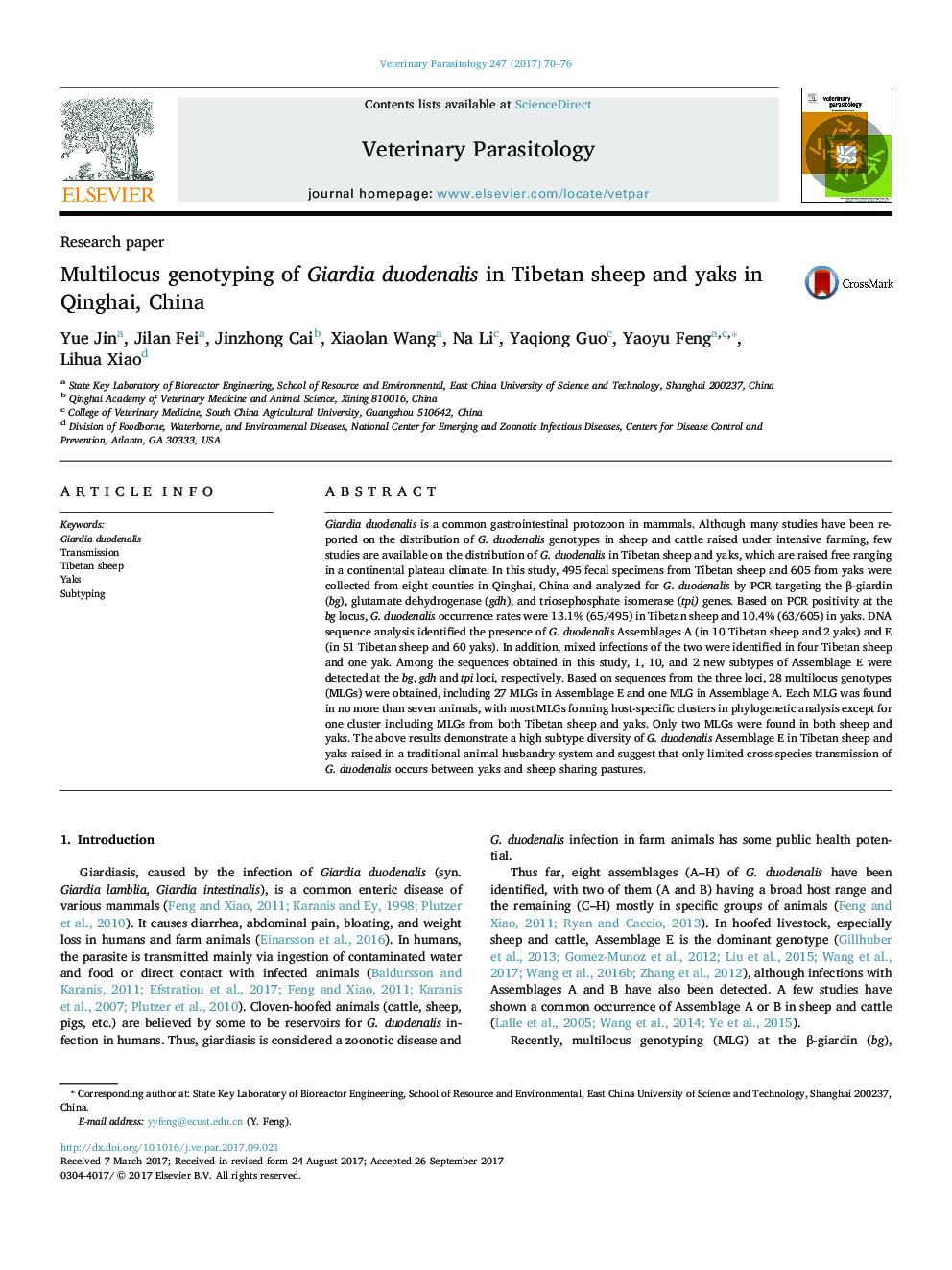| کد مقاله | کد نشریه | سال انتشار | مقاله انگلیسی | نسخه تمام متن |
|---|---|---|---|---|
| 5545526 | 1555629 | 2017 | 7 صفحه PDF | دانلود رایگان |
- 13.1% of 495 Tibetan sheep and 10.4% of 605 yaks were positive for Giardia duodenalis.
- Assemblage E was the dominant species in Tibetan sheep and yaks.
- Assemblage E had a high genetic diversity based on multilocus genotyping analysis.
- Cross-species transmission of Assemblage E between Tibetan sheep and yaks was limited.
Giardia duodenalis is a common gastrointestinal protozoon in mammals. Although many studies have been reported on the distribution of G. duodenalis genotypes in sheep and cattle raised under intensive farming, few studies are available on the distribution of G. duodenalis in Tibetan sheep and yaks, which are raised free ranging in a continental plateau climate. In this study, 495 fecal specimens from Tibetan sheep and 605 from yaks were collected from eight counties in Qinghai, China and analyzed for G. duodenalis by PCR targeting the β-giardin (bg), glutamate dehydrogenase (gdh), and triosephosphate isomerase (tpi) genes. Based on PCR positivity at the bg locus, G. duodenalis occurrence rates were 13.1% (65/495) in Tibetan sheep and 10.4% (63/605) in yaks. DNA sequence analysis identified the presence of G. duodenalis Assemblages A (in 10 Tibetan sheep and 2 yaks) and E (in 51 Tibetan sheep and 60 yaks). In addition, mixed infections of the two were identified in four Tibetan sheep and one yak. Among the sequences obtained in this study, 1, 10, and 2 new subtypes of Assemblage E were detected at the bg, gdh and tpi loci, respectively. Based on sequences from the three loci, 28 multilocus genotypes (MLGs) were obtained, including 27 MLGs in Assemblage E and one MLG in Assemblage A. Each MLG was found in no more than seven animals, with most MLGs forming host-specific clusters in phylogenetic analysis except for one cluster including MLGs from both Tibetan sheep and yaks. Only two MLGs were found in both sheep and yaks. The above results demonstrate a high subtype diversity of G. duodenalis Assemblage E in Tibetan sheep and yaks raised in a traditional animal husbandry system and suggest that only limited cross-species transmission of G. duodenalis occurs between yaks and sheep sharing pastures.
Journal: Veterinary Parasitology - Volume 247, 30 November 2017, Pages 70-76
